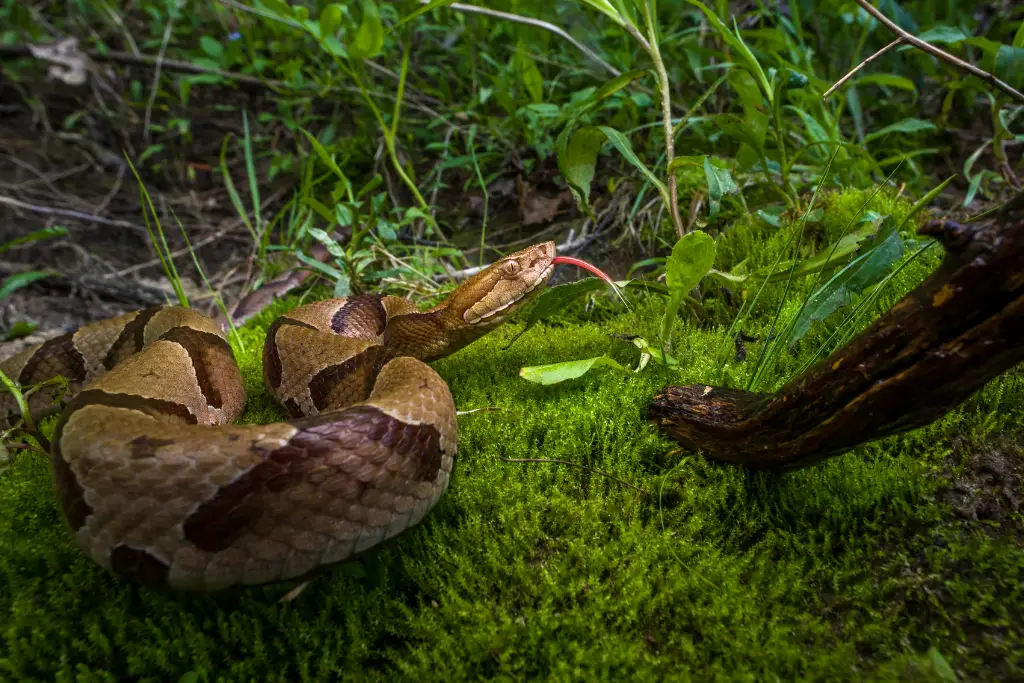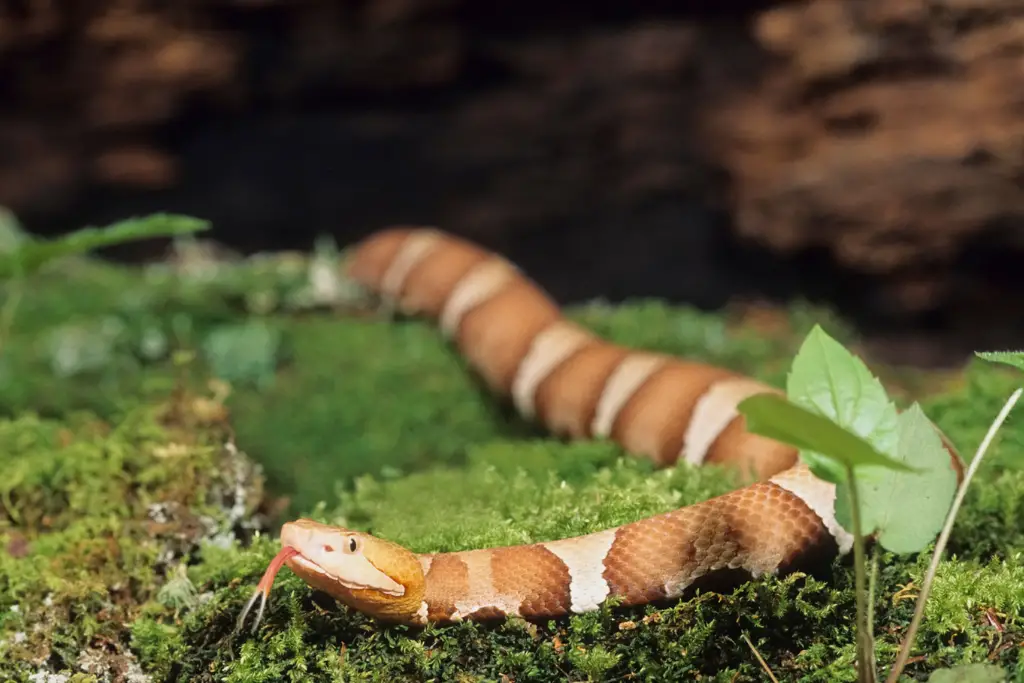Can copperheads swim? There are many snakes in the world that can happily swim in the water and while some snakes do this naturally there are others that can not. A lot of this has to do with how and where they live.
But most likely you will find these (water snakes) near streams and rivers where there are plenty of food sources. But what about copperheads?
Yes, copperheads can swim! While some snakes tend to avoid water, copperheads are often found in regions close to water. They also go for occasional swims which is quite peculiar as non-water snake species do not typically engage in this behavior!
However, knowing that copperheads can swim is only the start, we will also explore other related questions like how fast copperheads can move through water, are they good swimmers, and how long they can swim for, and more! Keep reading…
Do Copperheads Like To Swim?
While you might find copperheads in regions near water, it does not mean they like to swim. In fact, while there are some species of snake that can actually dive into the waters and remain under for several minutes.
Copperheads will only swim if they are hunting or stalking their prey! Another reason for them to go into the water is if they are chased by a predator. A copper snake can easily lose predators in water and this is quite a clever move.
However, it can be difficult to determine whether or not they like swimming as their behavior in the waters varies from one individual to another.
For instance, some copperheads might only take part in occasional swims while others will remain under for long periods of time!
Related Article:
Are Copperheads Good Swimmers?
The short answer is: Yes! However, as we mentioned before the way in which each individual snake behaves when swimming also depends upon various factors.
Such as how frequently the copperhead snake goes into waters and whether or not there’s an opportunity to catch prey nearby. The more they do this the better they become at swimming.
Copperheads also have some benefits when swimming for example…
- Copperhead snakes will use their long tails to propel themselves forward.
- Their smooth body texture helps the snake move through the water at high speed
Do Copperheads Swim Underwater?
This is a tricky question to answer as it depends on the individual copperhead. For instance, some of them remain under for long periods of time while others will only go into waters if they are chasing after their prey.
In most cases, however, these snakes do not swim underwater but rest at the bottom catching their breath or waiting for potential prey items to come along!
How Long Can Copperheads Swim Underwater?
This largely depends on what the snake is doing at the time as well as how far it has to go in order to catch its prey or escape from a predator.
On average, copperhead snakes that go underwater only stay under for a couple of minutes.
However, this does not mean that other species cannot stay longer underwater though because other types like anacondas and pythons are known to hold their breath for several hours while waiting for potential prey.
This ability makes these serpents quite resilient and should not be taken lightly by those who come across them in their natural habitats.

How Fast Can Copperheads Swim?
One of the most fascinating things about snakes is how they move through their environment, and while there are many species that can swim by undulating their bodies like an eel, copperheads will actually use their tails to propel themselves forward!
They can do this at incredible speed, fast enough to catch certain types of fish. As before, they do this by using flaps on either side of their body which provide additional assistance with propulsion.
These flaps do not help them lift up out of the water but instead can act like rudders for maneuvering in various directions.
As a result, when swimming copperhead snake speed cannot be calculated using common measurements used for measuring other animals since it depends largely upon how fast they can push off against the surrounding medium (in this case, water).
Related Article:
Do Copperhead Snakes Bite When Swimming?
Generally speaking, most species of snake will avoid biting unless they absolutely have to since this action puts them in danger as well (evidence here: Do Rattlesnake Bites Always Hurt?).
This applies even more so for venomous serpents such as the North American copperhead which does not want to end up wasting its precious venom on a potential threat or target that might fight back!
In fact, these snakes prefer striking only if their lives depend upon it and there’s no other way out.
If cornered by humans who come too close to a copperhead snake then the chances are high that they might go on the defensive and bite.
Do Copperheads Hunt Underwater?
Yes, they can! Copperheads are quite effective hunters so you can be sure that if there is something to catch nearby then these snakes will get hold of it.
If copperheads are hungry and there is a potential food source nearby then you can bet they will swim towards it.
However, if the likelihood to catch their prey near water is low then naturally these snakes would prefer an easier way of hunting as opposed to swimming after what might not be such a great meal!
Their prey items include small mammals such as rats and mice but also other reptiles like lizards.
However, while some species may go after their prey at the surface or below; others prefer swimming underwater in order to ambush unsuspecting creatures which pass by them unsuspectingly.
Most often than not, however, hunting underwater depends largely upon how hungry a snake is because when an individual has just eaten its appetite might be satiated for up to several days.
Since food options around bodies of water are often limited copperheads may just go after prey that is swimming near the surface.
How Can You Tell A Copperhead From A Water Snake?
It can sometimes be difficult to tell a copperhead from other water snakes. This is because they share similar traits such as having triangular-shaped heads and the same type of eyes (like cats!).
Of course, it’s important to remember that not all venomous creatures are North American so you should always ask before touching or trying to pick one up!
Water snakes have a darker pattern on their skin which makes them look much more dangerous than they really are.
Yet copperhead snakes are really noticeable by their color that is orange like copper on their head and the body giving them the name copperhead snake and they have a heart-shaped head.
However, while some species might swim aggressively others prefer going away whenever there’s someone nearby so do take these differences into account when determining whether an aquatic snake in your area is actually harmful or harmless.
Conclusion
So can Copperheads Swim? Yes, and quite fast too! They might stay submerged in water for a certain amount of time depending upon how hungry they are and whether there’s an opportunity nearby to get a meal from the water!
But, If you see a copperhead in the water stay away as they can be very dangerous if approached! if you are bitten it can be fatal if not treated right away.




